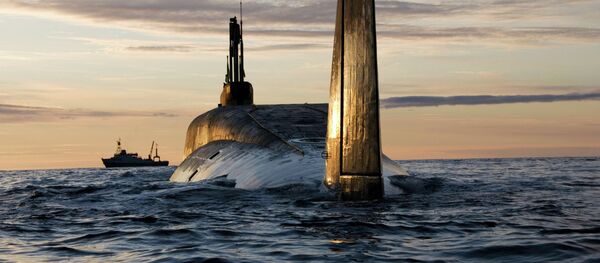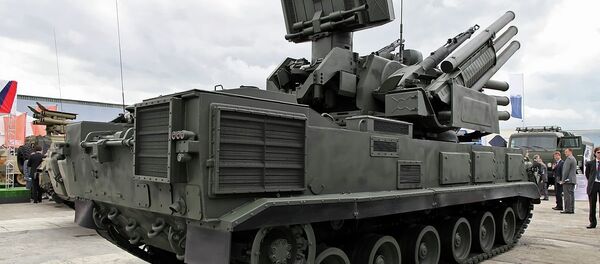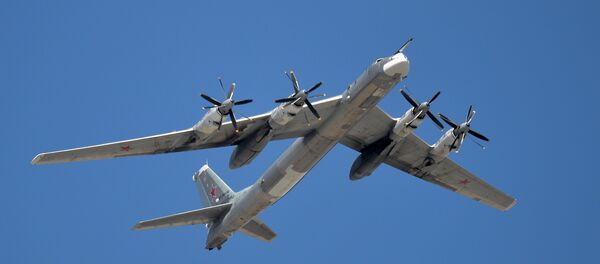In his analysis, published by the independent online newspaper Svobodnaya Pressa, Sivkov begins by recalling that the general media and expert appraisal of the concept is that it would be a danger to the entire world, if ever implemented.
"Generalizing the appraisals of the Prompt Global Strike program, it emerges that this is an extremely dangerous idea that would become a deadly threat for almost all nations. At the core of this idea is the assertion that precision conventional weapons can be comparable in their destructive power to nuclear weapons. Accordingly, their massed use against Washington's foes could bring them to their knees."
At its core, the doctor of military sciences recalls, the concept "involves the creation of a complete combat system, and apart from the strike component also requires subsystems including reconnaissance and surveillance, command and communications posts, as well as jamming systems."
"The weapons used under this concept would include land- and sea-based ballistic missiles, as well as sea- and air-launched hypersonic long-range cruise missiles. In the long term, space-based platforms can also be used to launch attacks."
Sivkov notes that ballistic missiles are currently the most likely candidate to meet the requirements laid out by the concept of the Prompt Global Strike. "They provide for the high-precision destruction of targets (with a CEP accuracy of 100-150 meters), a short delivery time (no more than 30-40 minutes), and high speed of the warhead in the target area, allowing them to destroy objects buried deep underground. Their large throw-weight (up to 3.5 tons) allows for the use of various types of warheads."
"However, there are a number of issues that make the use of conventionally-equipped ballistic missiles problematic."
"Secondly, the START treaties limit the total number of deployed ballistic missiles, and make no distinction between nuclear and conventionally equipped weapons. In other words, equipping ground and sea-based ballistic missiles with conventional warheads can only be done through a corresponding reduction in the number of deployed nuclear missiles."
Therefore, another important component of the Prompt Global Strike initiative is the Boeing X-51A, a prospective missile expected to be capable of hypersonic flight at a speed of 6,500-7,500 km/h.
"However," Sivkov notes, "tests of this system have not yet yielded the expected results. And while the X-51A program has not been closed, it can only be expected to appear in the medium term, and to be adopted into service in sufficient quantities only in the long term."
"Therefore, the US military is not expected to receive any fundamentally new weapons systems giving the Prompt Global Strike initiative any operationally significant effect in the medium and even long term perspective."
12 such SLCMs can be placed on each of the 23 serving Los Angeles-class attack submarines. The same number can be launched from the Seawolf-class and Virginia-class subs (3 units and 9 units, respectively). "Under the program to convert Ohio-class submarines into carriers of Tomahawk missiles, each of the 4 subs were expected to carry 154 SLCMs. However, that program was closed."
61 of the US's new Arleigh Burke-class destroyers, and its 22 Ticonderoga-class cruisers are equipped with vertical launching systems, the Arleigh Burke-class featuring the 96-cell Mark 41 VLS, and the Ticonderoga a 122-cell system.
Therefore, Sivkov notes, the US surface fleet can theoretically carry a total of 4,000 surface-ship launched cruise missiles, plus another 1,000 onboard its submarines.
"However, realistically speaking, given the need to use part of the surface fleet for other purposes, and accounting for operational readiness, ships and submarines of the US Navy can actually deploy no more than 2,500-3,000 SLCMs" at any one time.
"In addition to the Navy, US long-range strategic bombers are also equipped with long-range cruise missiles. At present, the US Air Force is equipped with about 130 strategic bombers, capable of deploying a total of about 1,200 air launched cruise missiles (ALCMs). Thus, in total, all [US] carriers of cruise missiles are able to launch a total of 3,700-4,200 missiles."
"This," Sivkov notes, "is quite an impressive force, and absent an effective response, is capable of destroying (knocking out) 1,000 important sites of the opponent in the potential first strike."
However, the analyst notes, this capability does really conform to the concept of the Prompt Global Strike, for several reasons.
"Firstly, such a strike would not, in fact, be 'prompt', since the preparations for such a large-scale attack would require a great deal of time – 2 months or more. At this time, the US would need to implement the strategic deployment of its air and naval forces in the area of the combat mission, to create the necessary inventories, and to conduct reconnaissance on the objects subject to attack. In other words, this would no longer be the kind of air attack proposed by the Prompt Global Strike concept, but an ordinary missile-based strike."
"Second, if the impact of such an attack could really be devastating on small (or even medium-sized) countries, it will not fully deprive them of the opportunity to resist…Therefore, in the continuation of warfare, the US would, in one way or another, have to switch to the use of traditional means of warfare. In other words, the strike's use makes sense only if it is part of a fairly large-scale military operation in coordination with the other branches of the armed forces, and this, again, means that it will not be 'prompt', nor global, but an ordinary missile strike as part of the first wave of an offensive."
Russian experts, Sivkov says, "point to the serious threat such an attack poses to the Russian nuclear forces, the destruction of which would allow the US to move on to nuclear blackmail against our country, and the rest of the world. It is in this point that they see the main essence [and danger] of the Prompt Global Strike initiative."
"Indeed," the expert notes, "if Russia takes a passive position and does not adequately respond to the aggressor, the resulting blow could result in the destruction of 80-90% of our nuclear arsenal. However, taking account of actual conditions, it is clear that such a blow against Russia is extremely unlikely."
"Secondly, such a strike would be preceded by a sufficiently long period [of buildup], long enough for retaliation to occur. In this case the success of the operation would be called into question."
"Thirdly, the duration of such a strike would last for several hours (according to computer simulations – 4-6 hours). This means that after the first 20-30 minutes, when the Russian leadership realizes the scale of the aggression (even if the aggressor achieves complete operational surprise), a decision on a retaliatory nuclear strike can be made, while most nuclear forces are still in existence. That is, a massed US conventional strike would mean provoking a retaliatory nuclear strike."
At the same time, Sivkov warns, "a completely different picture emerges if we are talking about strikes on certain critical facilities in order to achieve a localized goal with a relatively limited number of weapons. In this case long-term preparations would not be required. The blow can be made by combat-ready forces immediately after receiving the order."
Again however, "the speed, surprise, and 'global' nature of the strike (up to 60 minutes according to the Prompt Global Strike concept) can be achieved only if US naval and air force groups are present in the area. This means that when it comes to the prompt response [to any rapidly emerging threats], the US is presently capable of employing only very limited forces – a few dozen long-range cruise missiles."
"These forces can damage or destroy 1-2 large or medium-sized facilities, or 2-3 objects of military or state administration, or 1-2 field objects, such as militant training camps, or 1-2 research centers."
"In other words," Sivkov notes, today and in the medium term, the concept of the Prompt Global Strike will only be capable of defeating local threats, such as the elimination of an individual political leader, the destruction of the leadership of an organization which has been labelled to be terrorist, or the deprivation of individual states' capacity to implement programs considered a threat to US national security," etc.
Ultimately, the analyst notes, "we can assert that in the current situation and in the medium term perspective, the concept of the Prompt Global Strike makes sense only in solving problems of an exclusively local character, against objects on the territory of states which cannot respond to the aggressor, and which have no security guarantees from a third, sufficiently powerful state."







